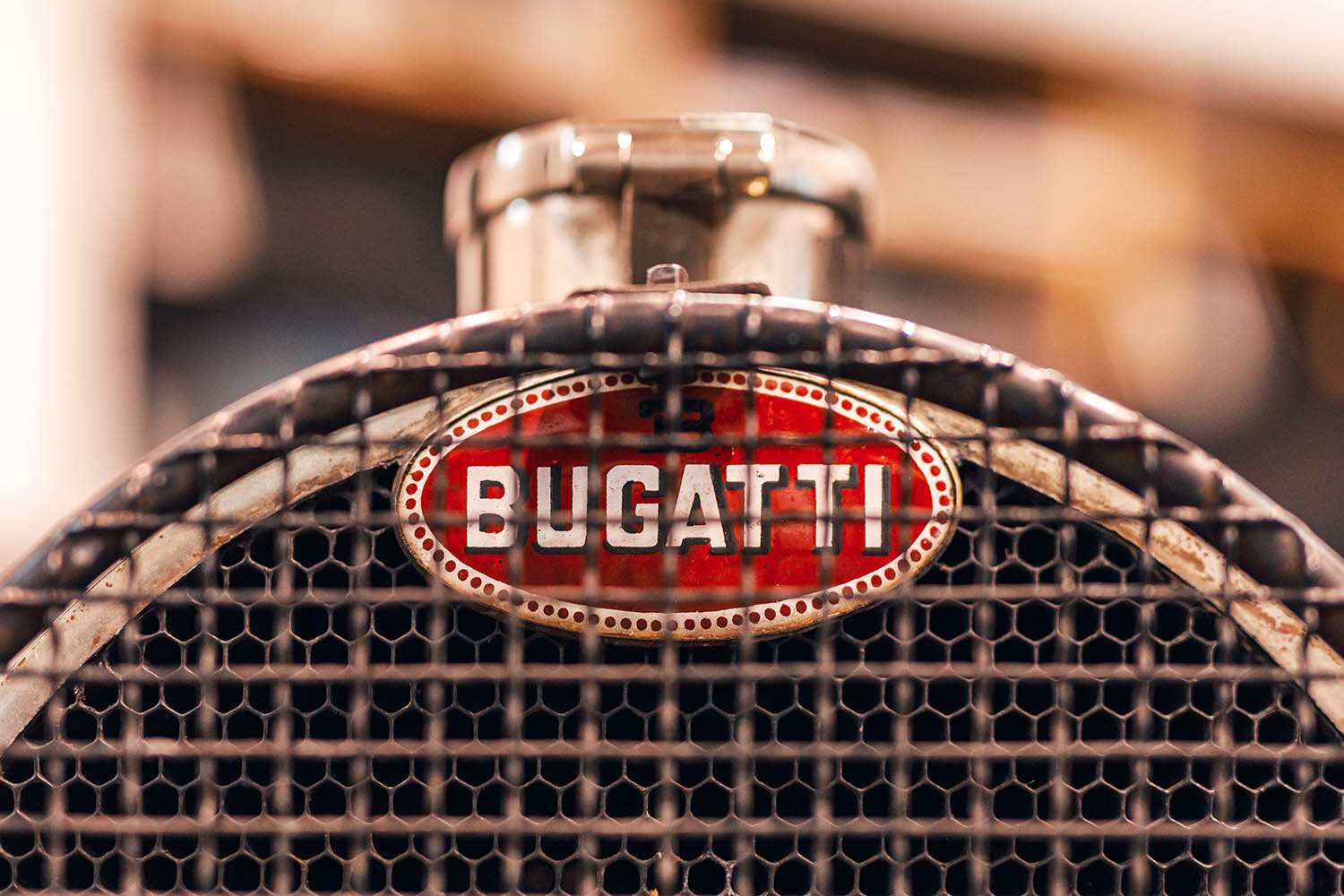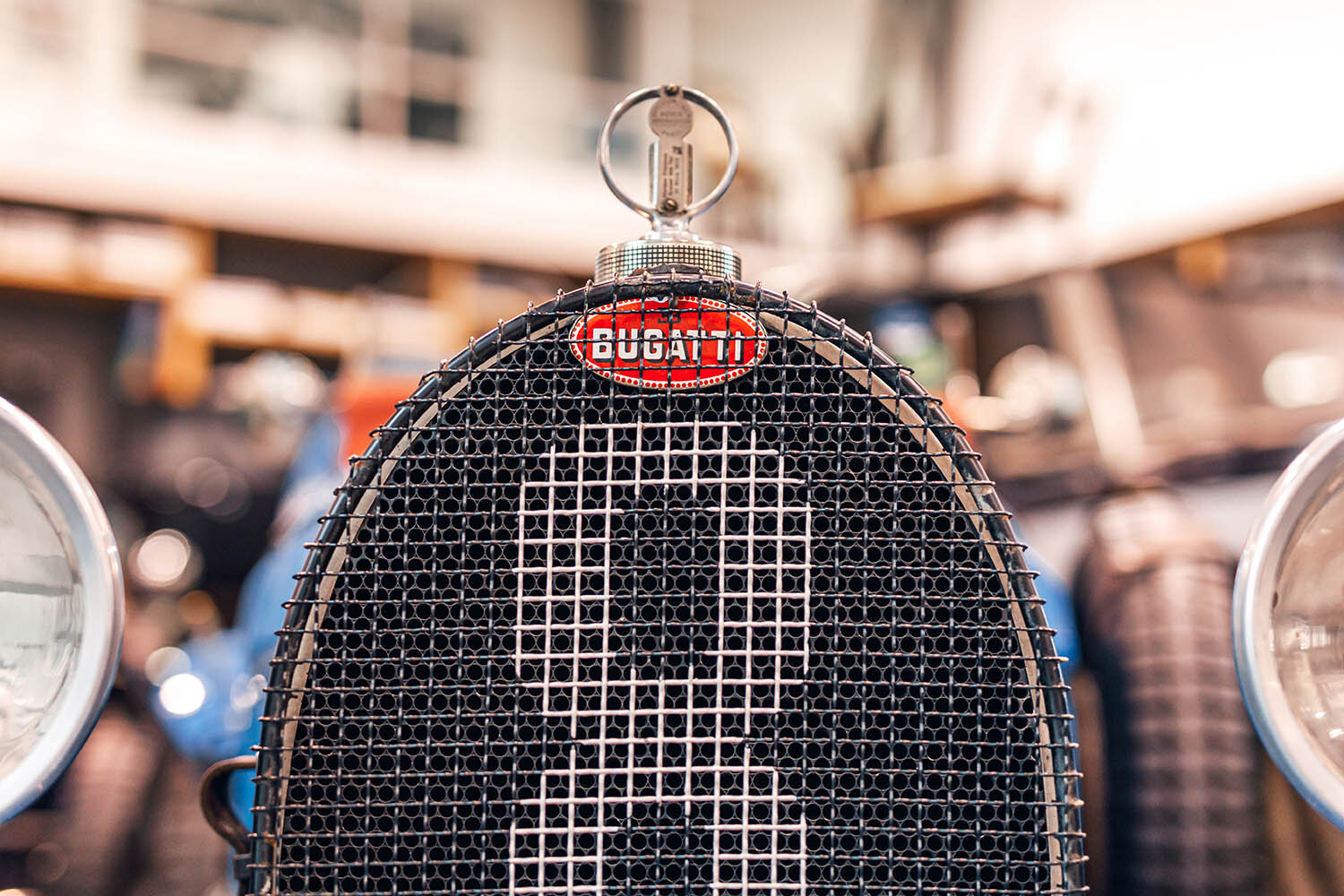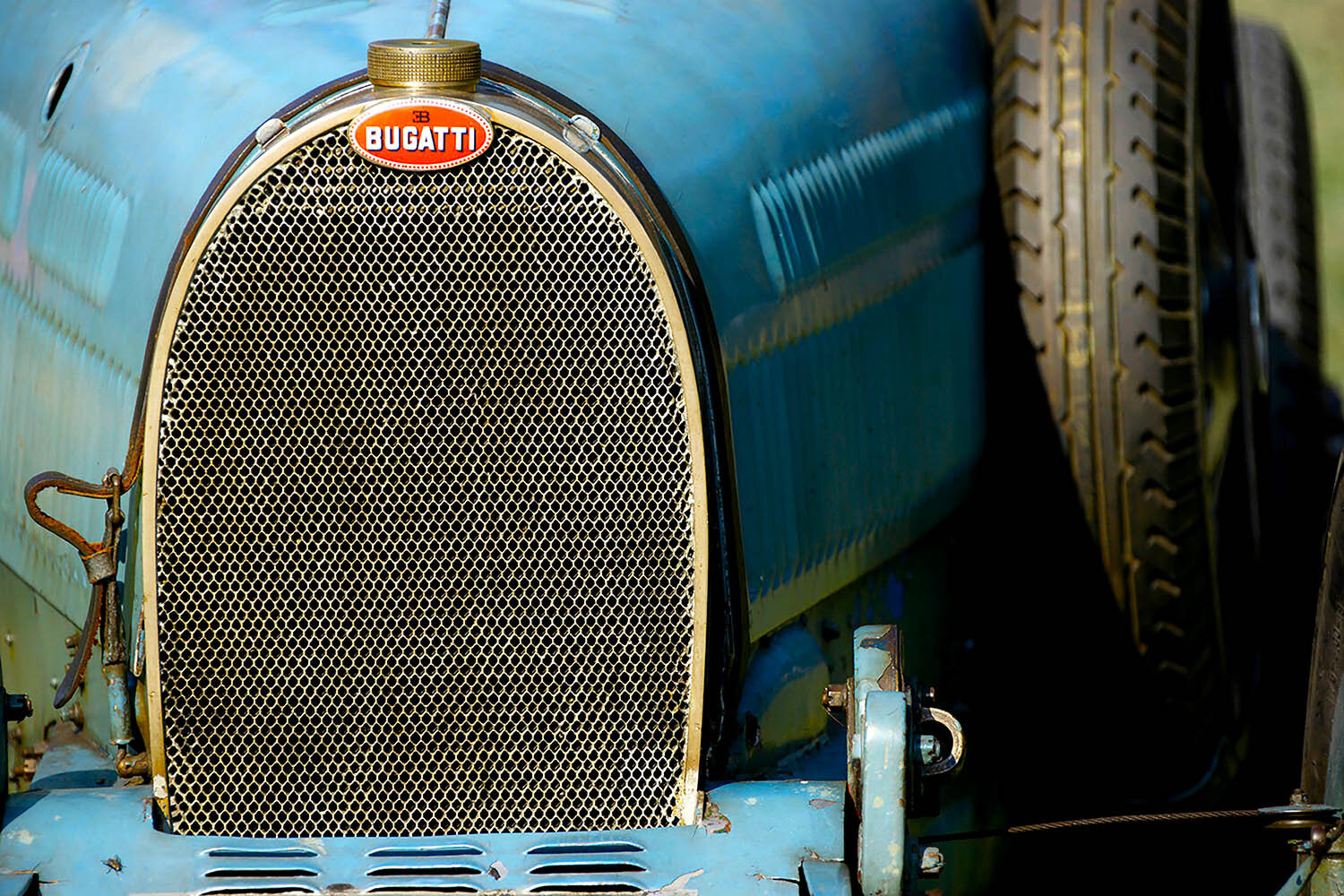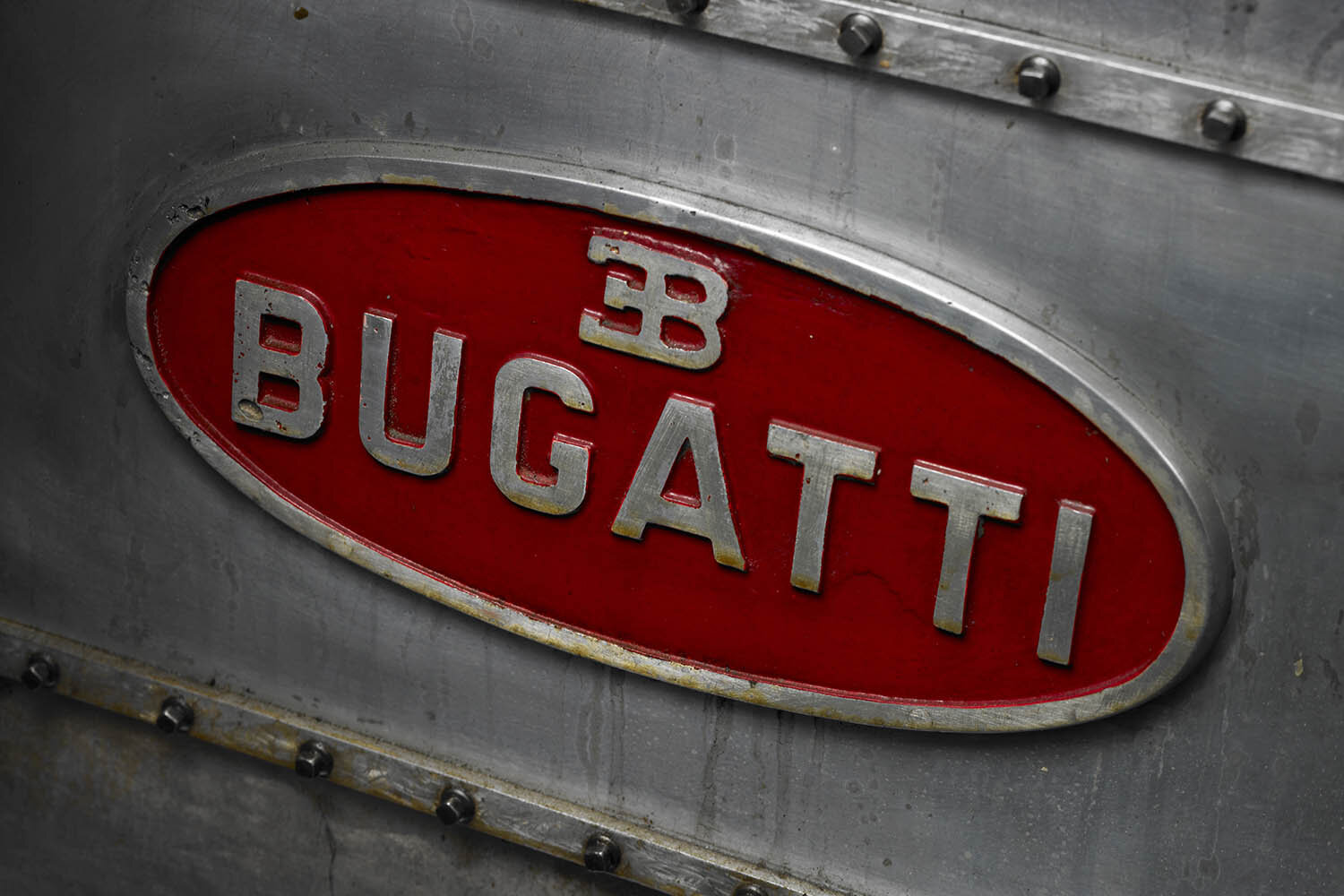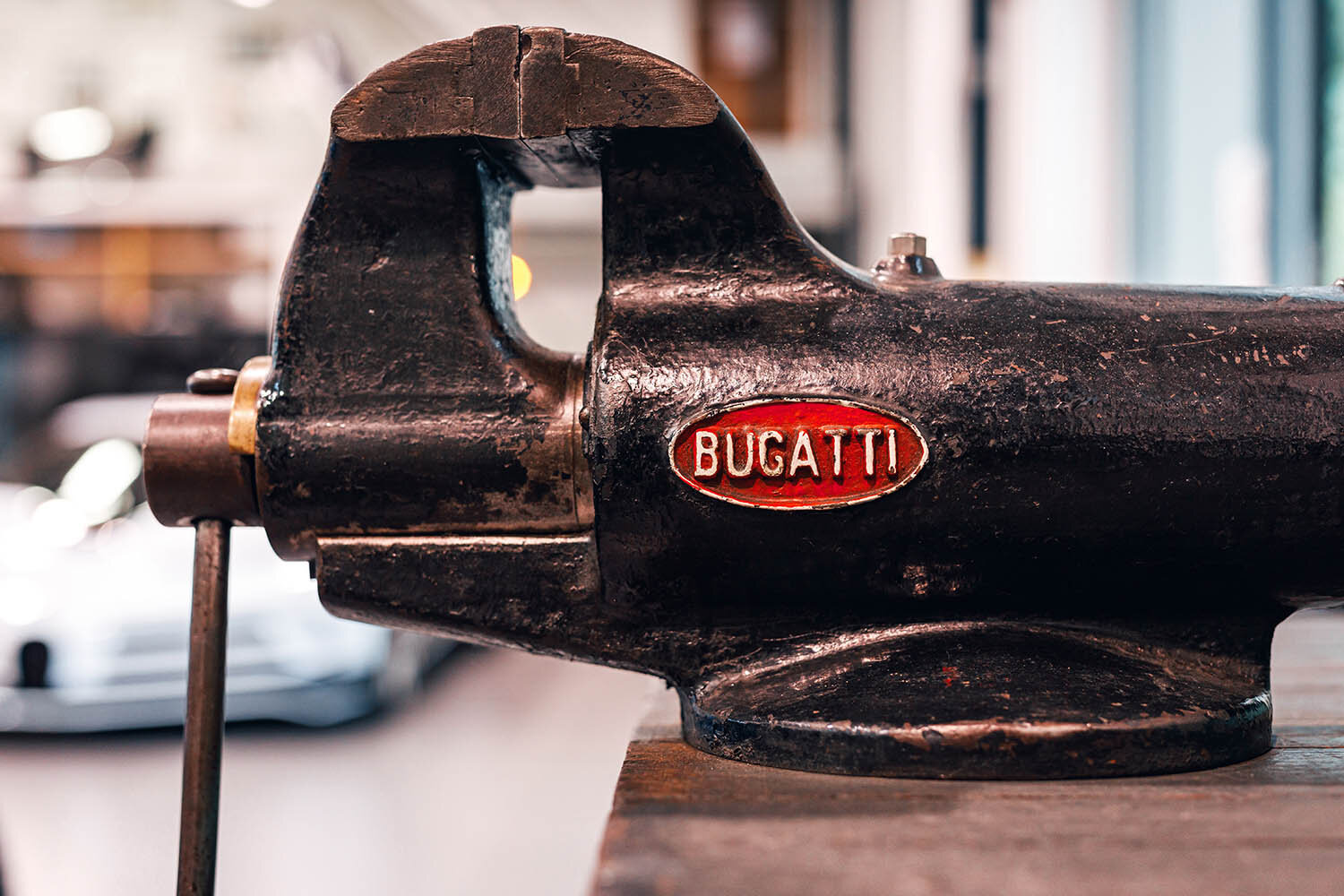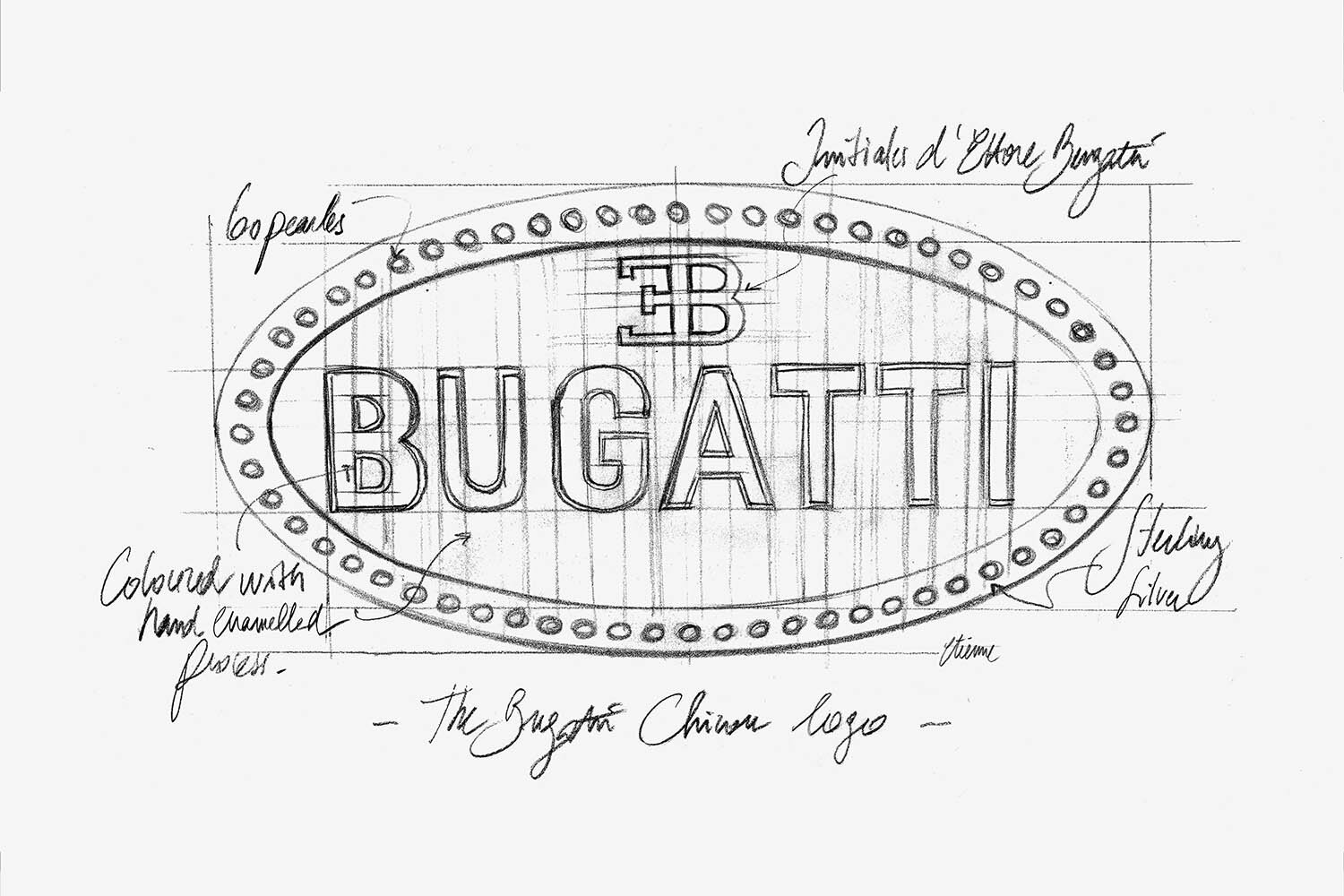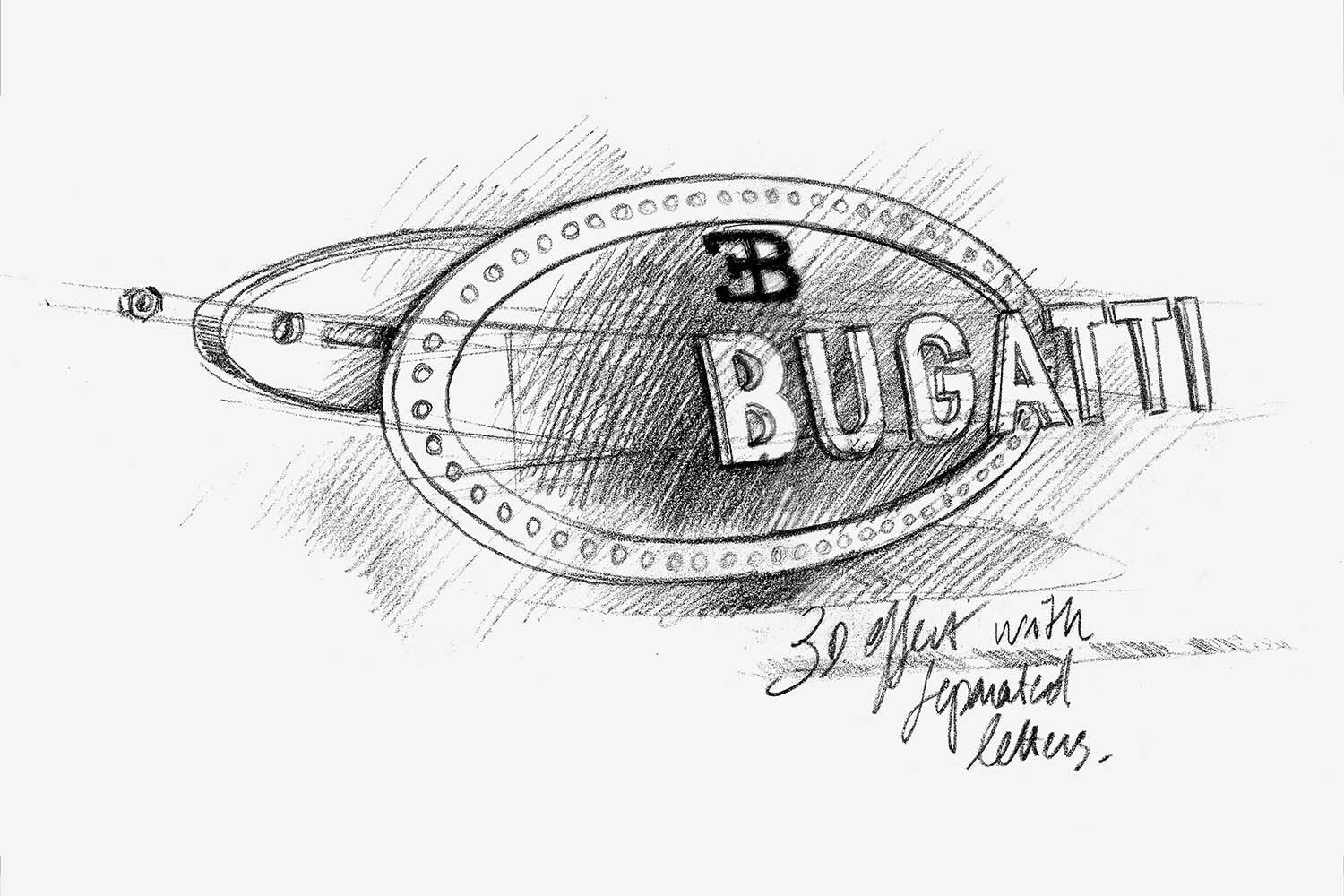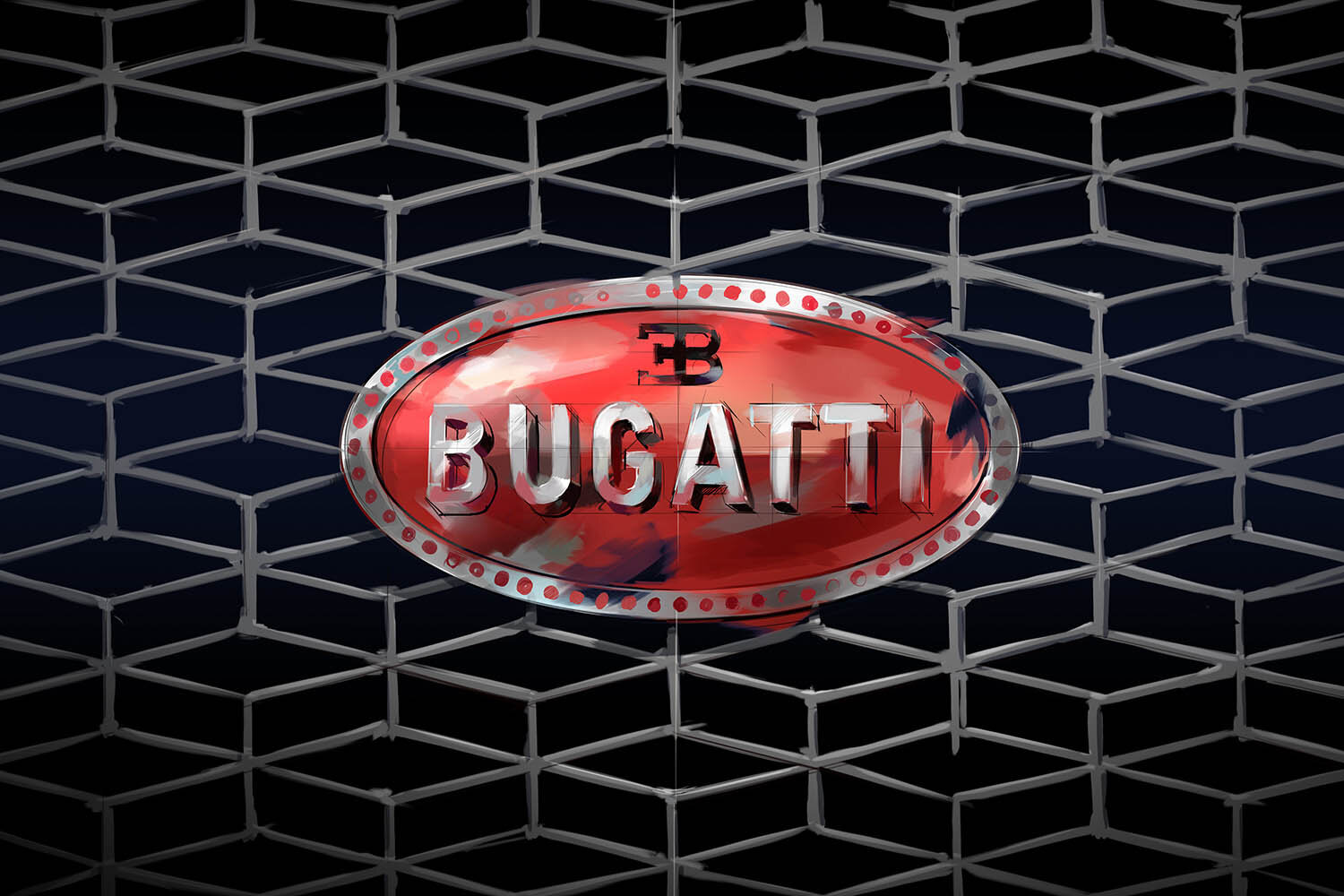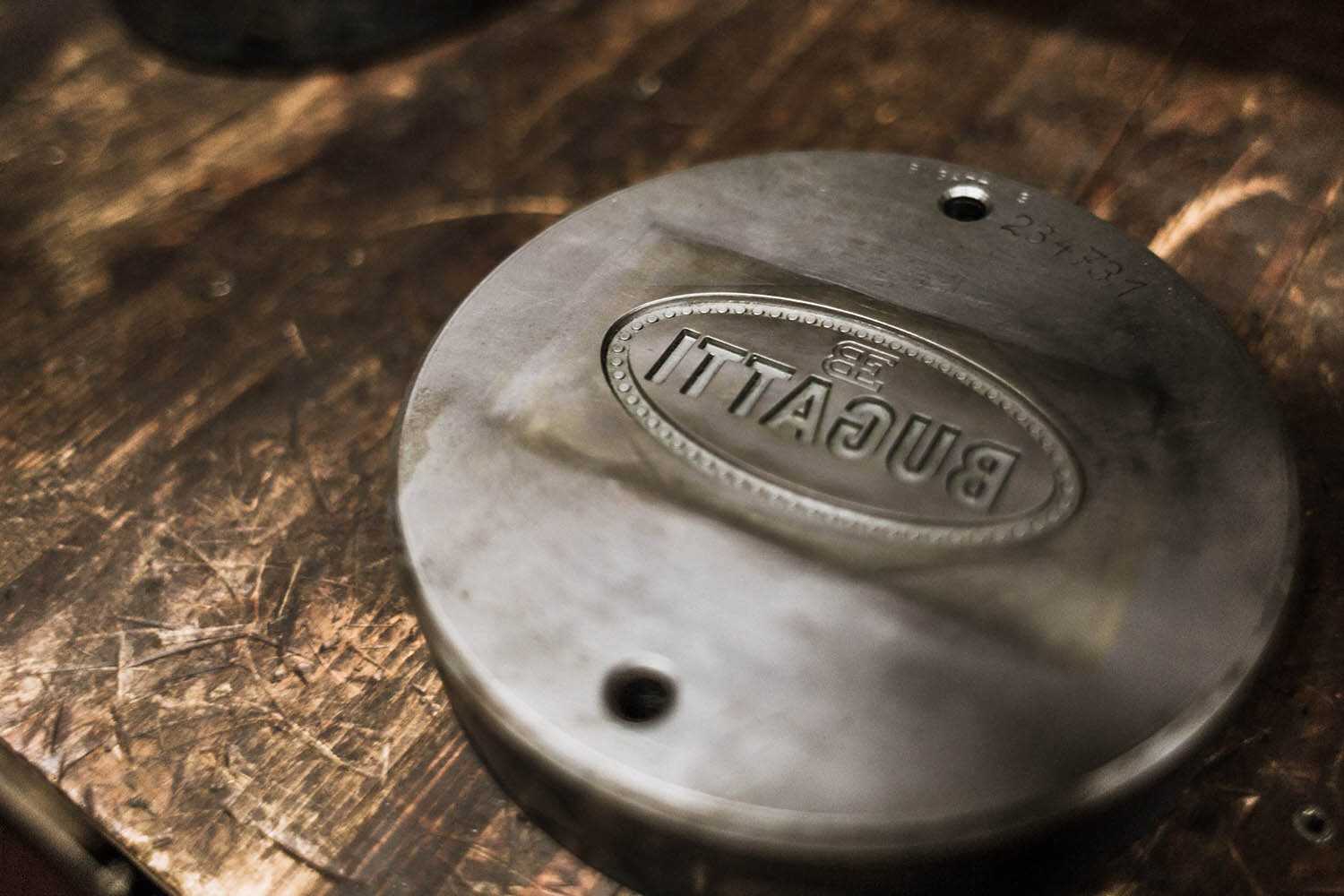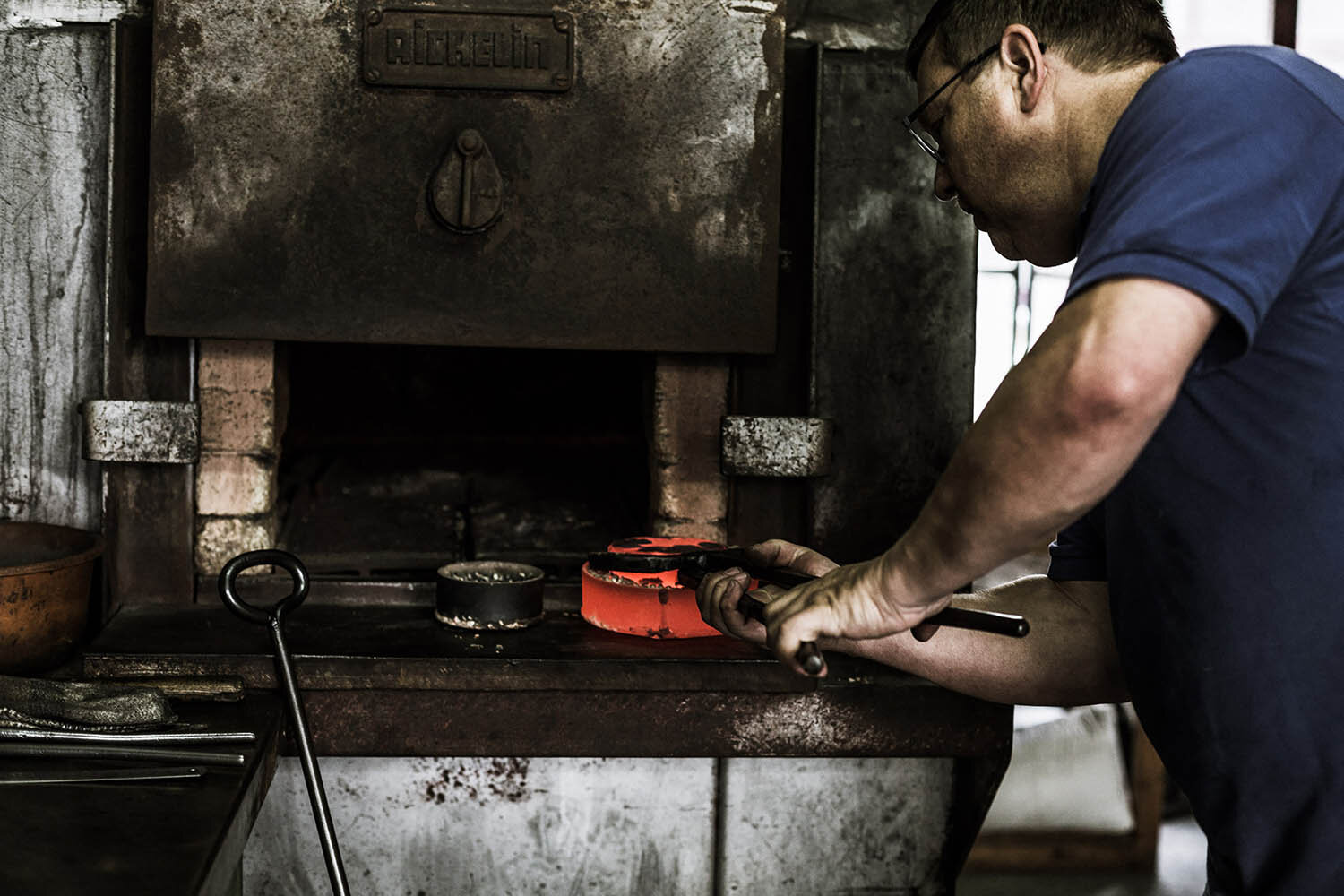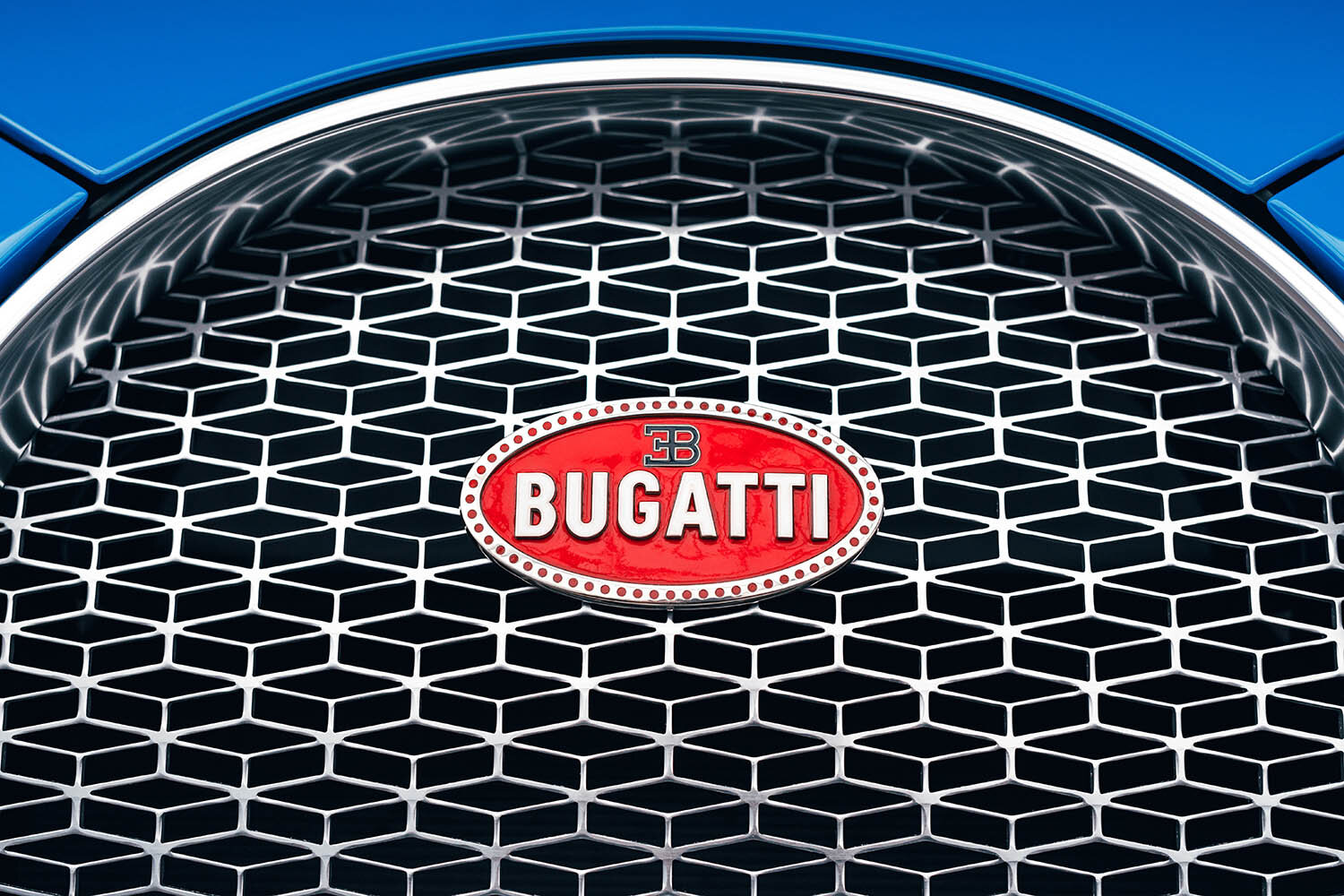Bugatti's 'Macaron' badge
Ever since the year the brand was founded, the Bugatti badge, the Macaron, has symbolised exclusivity, luxury, design and outstanding hand craftsmanship on the horseshoe radiator.
Towards the end of 1909, company founder Ettore Bugatti attached an oval badge made of enamelled metal onto the radiator grille of the Bugatti Type 13, the first official Bugatti. The idea for the oval shape with white lettering on a red background originated from Ettore Bugatti himself. He had already developed a similar logo for his previous employer Deutz in Cologne. When he started his own vehicle production, Bugatti intentionally chose a flat, but high-quality brand badge. According to the design instructions, the shape formed by cutting a cylinder with a diameter of 45 mm at an angle of 30 degrees. The popular and almost inflationary use of radiator figures at the time would have only spoiled the design of his vehicles. The only exception remains the dancing elephant on the Bugatti Type 41 Royale from 1926 – this is a replica of and tribute to a sculpture created by his deceased brother Rembrandt.
In addition to the easily legible name lettering in white on a red background, the badge also features the initials EB (for Ettore Bugatti) above this in black, as well as 60 red dots on a white surrounding border. Red stands for power and passion, white for elegance and nobility, and black for excellence and courage. According to the legend, the 60 dots symbolise pearls or threads in a style that conformed to the “Art Nouveau” fashion. In those days, they were used like splints to produce a permanent connection on mechanical parts – and the reliability and durability of his vehicles was something that was always very close to Ettore Bugatti’s heart during his lifetime. Bugatti has changed the appearance of the Macaron only slightly over the course of the years.

